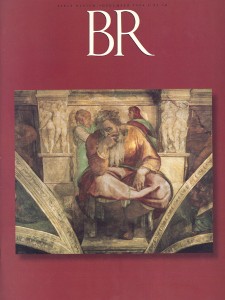To Each Its Own Meaning:
Edited by Steven L. McKenzie and Stephen R. Haynes (Louisville, KY: Westminster/John Knox Press, 1993), 251 pp.; $12.99.
An Introduction to Biblical Criticisms and Their Application
Anyone who reads works of biblical scholarship today is probably bewildered at times by the variety of methods that writers use in their scholarship. McKenzie and Haynes, colleagues at Rhodes College in Memphis, Tennessee, have assembled a heterogeneous group of 13 scholars, each of whom was assigned to write a chapter on one critical method. They were asked to provide an introductory description of the method, its relation to the others presented in the book, an illustration of the method using texts from Genesis or Luke-Acts, weaknesses of the method and bibliographical suggestions for those who want more. The result is a collection that has, as far as I know, no parallel. The chapters, with some exceptions, could be assigned to undergraduate or graduate students. The 13 types of criticism covered are divided into three sections: “Traditional Methods of Biblical Criticism” (historical, source, tradition-historical and redaction criticism); “Expanding the Tradition.” (social-scientific, canonical and rhetorical criticism); and “Overturning the Tradition” (structuralist, narrative, reader-response, poststructuralist and feminist criticism). One could argue whether all of these are independent methods of interpretation, but at least we now have an accessible, inexpensive and useful book to find out how 13 writers understand what these 13 different term mean.
Already a library member? Log in here.
Institution user? Log in with your IP address.

